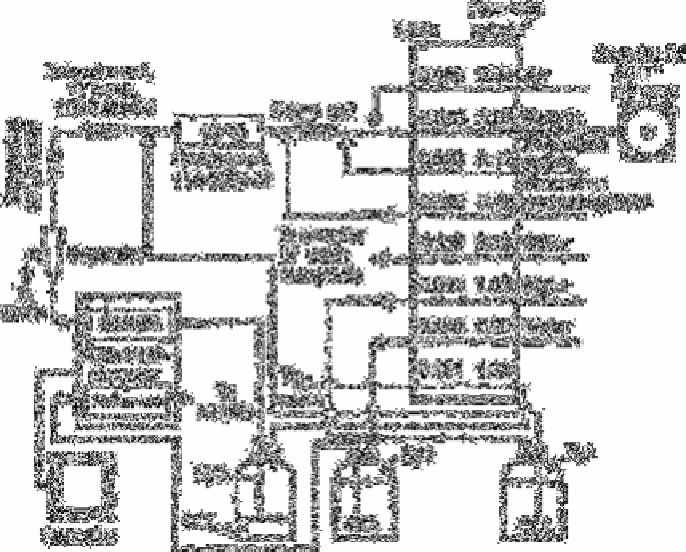Chemistry Reference
In-Depth Information
is used with a 20 h
−1
(2/7) cam made by cutting off four sampling lobes from a 60h
−1
(2/1) cam. This results in
Fig. 2.6
Bromide manifold
Source: Reproduced with permission from the Royal Society of
Chemistry [122]
a cycle time of 40s for sampling and 140s for rinsing. A 17-turn coil containing glass
beads is used as the extractor. To separate the two phases, a five-turn mixing coil is
placed perpendicular to the manifold; PTFE tubing is inserted inside the separating coil to
facilitate rapid separation. All connections are made with glass tubing or silicone rubber
sleeving. The final separator (Fig. 2.5) has a top portion that is enlarged to facilitate the
clean separation of solvent from the aqueous phase. Three 11 flasks are used for the
displacement of carbon tetrachloride. Connections are made with 1.0mm PTFE tubing. A
circulating System-225 cold bath (GCA/Precision Scientific) maintains the reaction
temperature of the condenser coil at 10°C.
Procedure
The manifold system (Fig. 2.6) is set up in a well ventilated hood to avoid contact with
carbon tetrachloride vapour. The potassium iodide and potassium permanganate solution
are placed in an ice bath. Demineralised water is fed into all reagent and sample lines,
allowing sufficient time for good separation of carbon tetrachloride from the aqueous
phase. The spectrophotometer is peaked optically and then the reversing switch is set

Search WWH ::

Custom Search